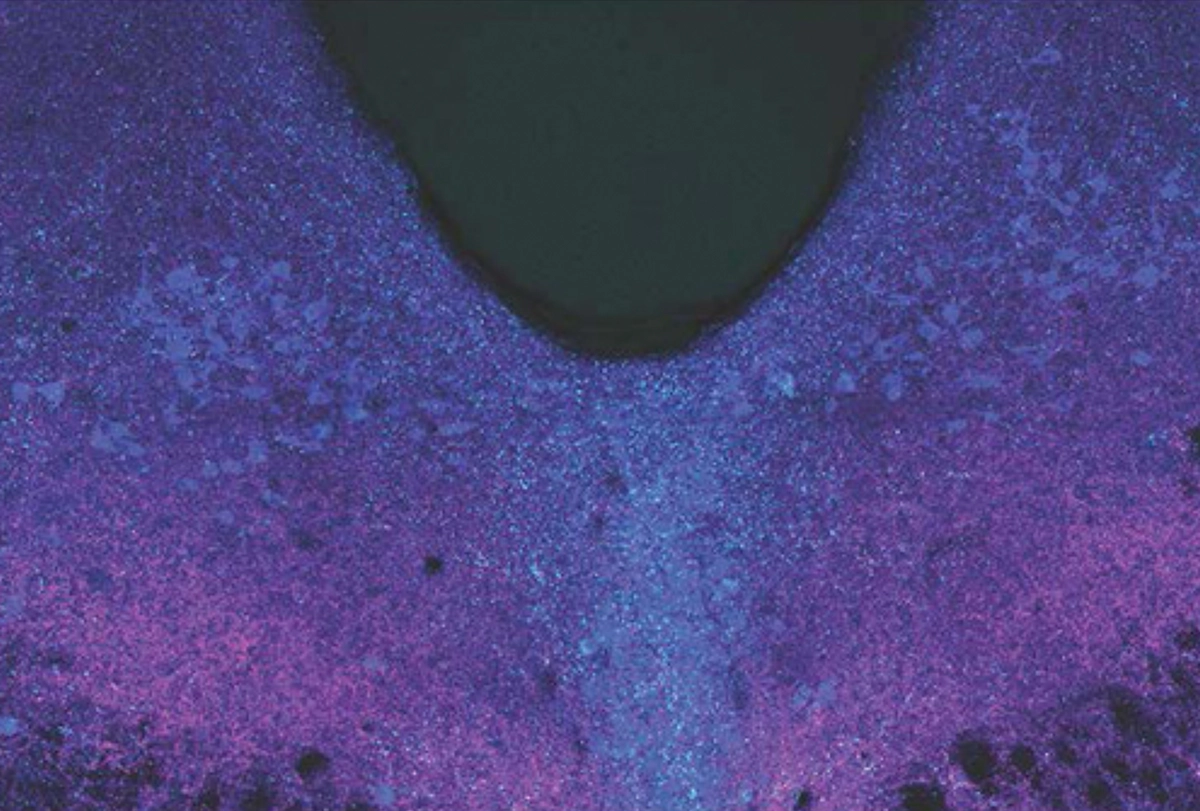We all need a little fear. It can drive us to flee or avoid dangerous situations. But after a traumatic experience, fear can sometimes surge in response to harmless objects, people or environments. This phenomenon, called fear generalization, contributes to fear-related conditions such as post-traumatic stress disorder (PTSD).
What makes the brain see danger in an innocuous stimulus? The answer may be a biochemical response to extreme stress, in which certain neurons change the neurotransmitters they use to communicate, according to a new study in mice.
The findings provide “a much more complex, dynamic picture of what’s going on” during fear learning, says Joseph Dunsmoor, assistant professor of psychiatry and behavioral sciences at the University of Texas at Austin, who was not involved with the work. “It’s nice to see rigorous studies like these that can do a deep dive using the latest neuroscience tools to get at this age-old question.”
The new work involved visualizing and manipulating cells in the lateral wing of the dorsal raphe nucleus, which has been implicated in responses related to fear, such as anxiety and panic, in mice.
In the absence of any threats, neurons in this region produce the neurotransmitters serotonin and glutamate, the team found. And the neurons express these same neurotransmitters after mice undergo classical fear conditioning, in which the animals learn to associate a specific cage with a mild shock to the foot and freeze if they are placed inside it.
But these neurons switched from expressing glutamate to gamma-aminobutyric acid (GABA) after the mice experienced a series of five stronger and longer foot shocks, which caused them to freeze not only when they were put back into the cage in which they had received the shocks, but also in other, unrelated cages and contexts—a sign of fear generalization.
M
ice in the new study did not develop generalized fear if they were injected with a virus that dampened their ability to produce GABA—which suggests that the change from glutamate to GABA underlies the behavioral change, says lead investigator Nicholas Spitzer, professor emeritus of neurobiology at the University of California, San Diego.This process, called neurotransmitter switching, might be an important mechanism of plasticity, Spitzer says. Neurotransmitter switching also occurs in the rat spinal cord to help with recovery after an injury and may facilitate motor learning during exercise in mice, previous studies show.
Release of the stress hormone corticosterone flips the switch, the study also suggests: A single, mild shock could induce fear generalization in animals that received an injection of the hormone, whereas genetically blocking its production prevented the response in animals that had five shocks.
The dorsal raphe neurons involved in the switch send their connections to areas that are well-known to be involved in fear, including the amygdala and the lateral hypothalamus, the team found. The results were published last month in Science.
A similar neurotransmitter switch exists in people, based on an analysis Spitzer and his team conducted on postmortem brain tissue from four people who had PTSD and four who did not. Those with PTSD had more neurons that expressed serotonin and GABA in the dorsal raphe and fewer neurons with serotonin and glutamate, compared with controls.
This is the first time this neurotransmitter switch has been observed in humans, says Aya Takeoka, a neuroscientist at the Leuven Brain Institute, who was not involved with the research.
Adding the drug fluoxetine, which is commonly prescribed for PTSD, to water that mice in the new study drank effectively blocked the switch from glutamate to GABA. And when added immediately after foot shocks, the animals did not develop generalized fear. If the mice received the drug two weeks after the shocks, however, the neurons retained their original neurotransmitters, and the mice still went on to develop generalized fear, which suggests that the timing of treatment for those with fear disorders may be crucial, Dunsmoor says. “Once a memory has hardened, it’s much harder to treat.”
Other mechanisms beyond this specific circuit could also explain why negative emotions such as fear can spread to unrelated contexts, according to an independent team’s preprint. When mice are in the process of creating a new memory in response to a strong foot shock, the brain reactivates not only neurons in the hippocampus that encode the shock memory but also ones that encode a previous and recent neutral memory, linking the two memories together, the team found. These shared connections then fire together when mice are put in the previous neutral context, leading the animals to freeze in a situation in which they have never been shocked.
Future research needs to parse these different mechanisms, including how the neurotransmitter switch influences the function of the dorsal raphe neurons and the brain areas they communicate with, Takeoka says. For example, studies should examine the functional consequences of the switch by using cellular electrophysiology and check to see whether postsynaptic nerve cells have the machinery to receive the new neurotransmitter, she adds. “We need to understand steps in between to be able to use that knowledge to actually influence how we behave or treat PTSD.”






